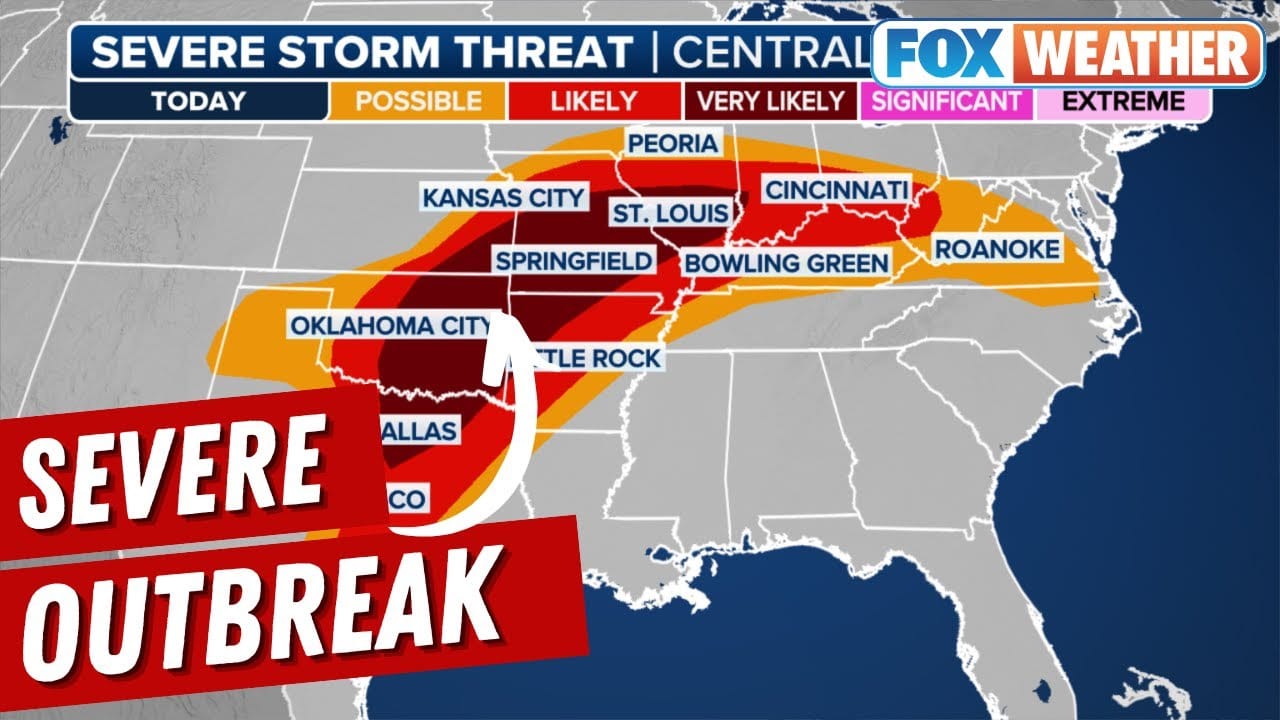In a troubling forecast for the Central United States, meteorologists are predicting a severe tornado outbreak combined with the potential for catastrophic flooding. This precarious situation is expected to unfold over the next few days, leading to heightened alertness and calls for preparedness in affected areas. As weather patterns shift, the threat of dangerous storms has increased, making it crucial for residents to remain informed and vigilant.
The National Weather Service (NWS) has issued warnings for various states within the central region, identifying areas particularly susceptible to both tornado formation and significant rainfall. Tornadoes develop from severe thunderstorms, and conditions conducive to such storms are anticipated. Atmospheric instability, combined with warm, moist air surging from the Gulf of Mexico, creates the perfect environment for violent weather. This atmospheric setup could lead to rapid storm development, resulting in potentially destructive tornadoes,
Meteorologists have specifically highlighted states including parts of Missouri, Illinois, Indiana, and Arkansas as high-risk zones. The convergence of different air masses is expected to trigger intense thunderstorms, with the capacity to produce tornadoes of varying intensity. Residents in these areas must be prepared to take immediate action should tornado watches or warnings be issued.
In tandem with tornado threat, forecasts indicate heavy rainfall, which raises the potential for flooding. Given that many areas have already experienced above-average rainfall in recent weeks, soil saturation levels are elevated, increasing the risk for flash flooding. As storms roll through, rainfall amounts could exceed several inches in a short span, making rapid flooding scenarios likely, especially in low-lying areas and near rivers.
Authorities are urging residents to heed local alerts and to have emergency plans in place. Preparedness tips include having a disaster supply kit ready, identifying safe shelter locations, and staying updated via weather radio or mobile alerts. The importance of communication during severe weather cannot be overstated; staying informed through reliable news sources and weather updates is critical.
Previous weather outbreaks serve as cautionary tales. Historical data indicates that tornadoes spawned from severe thunderstorms often lead to widespread devastation, including loss of life, property damage, and disruptions to essential services. Furthermore, flooding can compound these dangers, creating hazardous situations that complicate rescue and recovery efforts.
Emergency management agencies across the impacted states are mobilizing resources in anticipation of the severe weather. State and local officials have been preparing for various contingencies, including emergency response teams standing by for deployment. Many regions are implementing outreach to ensure community members understand the risks and know how to respond effectively.
As the situation develops, predictions may change, necessitating flexible response strategies from authorities and residents alike. Moreover, the role of technology has become indispensable in tracking storms and disseminating information, allowing for timely warnings that can save lives.
Climate experts also point out that the central U.S. has long been a hotspot for tornado activity, particularly during the spring months. However, the temporal dynamics of weather patterns seem to be shifting, with severe weather becoming more unpredictable. While the imminent outbreak is alarming, understanding the broader climate context can help communities prepare for not just immediate threats but future weather patterns as well.
While tornadoes and flooding are natural phenomena, the human impact is significant. People are encouraged to think critically about their vulnerability to severe weather events, especially those residing in known floodplains or mobile homes. Continuous public education on the nature of these threats, in conjunction with local preparedness initiatives, is vital in mitigating risks.
In conclusion, the impending tornado outbreak and potential flooding in the Central United States present a serious challenge for both residents and emergency response teams. Being informed and prepared can be the difference between life and death during such extreme weather events. As atmospheric conditions continue to evolve in the coming days, keeping an eye on local forecasts and adhering to safety guidance will be critical. With a united community effort and readiness to act, the impacts of this meteorological phenomenon can be managed more effectively, reducing the potential for catastrophe.



